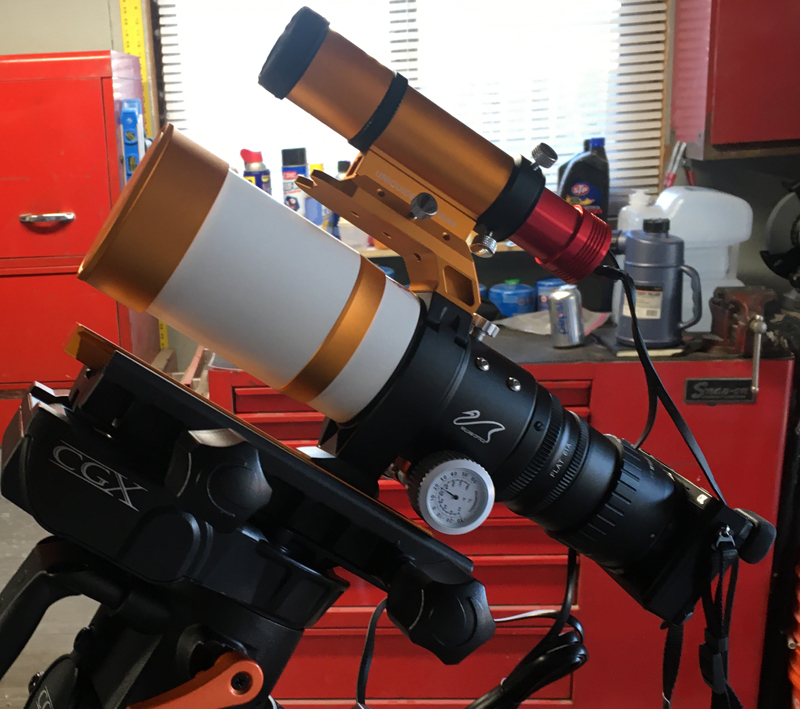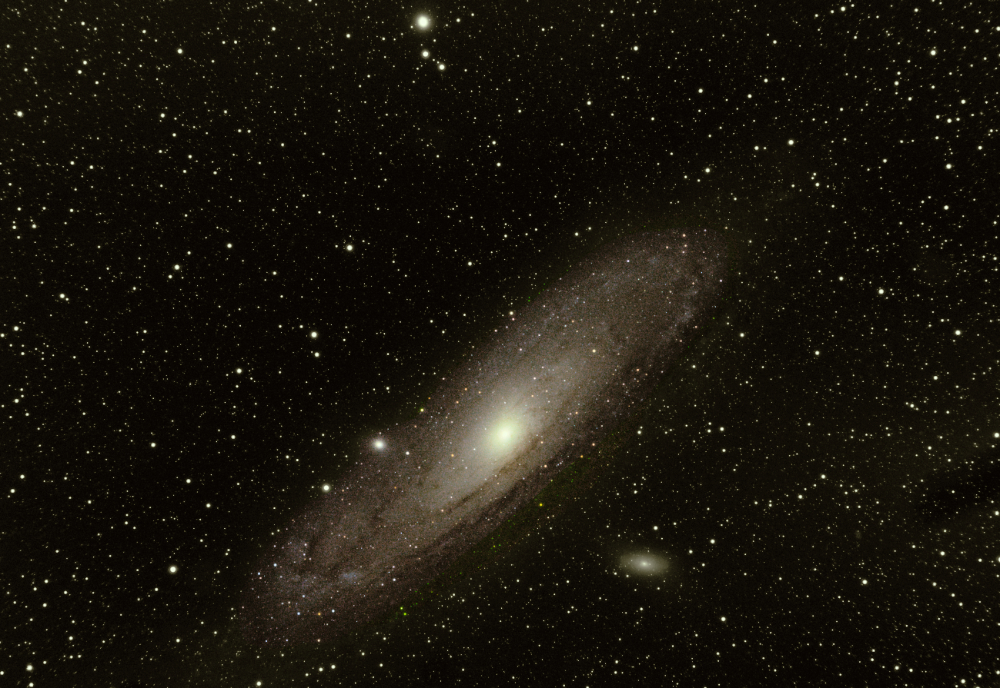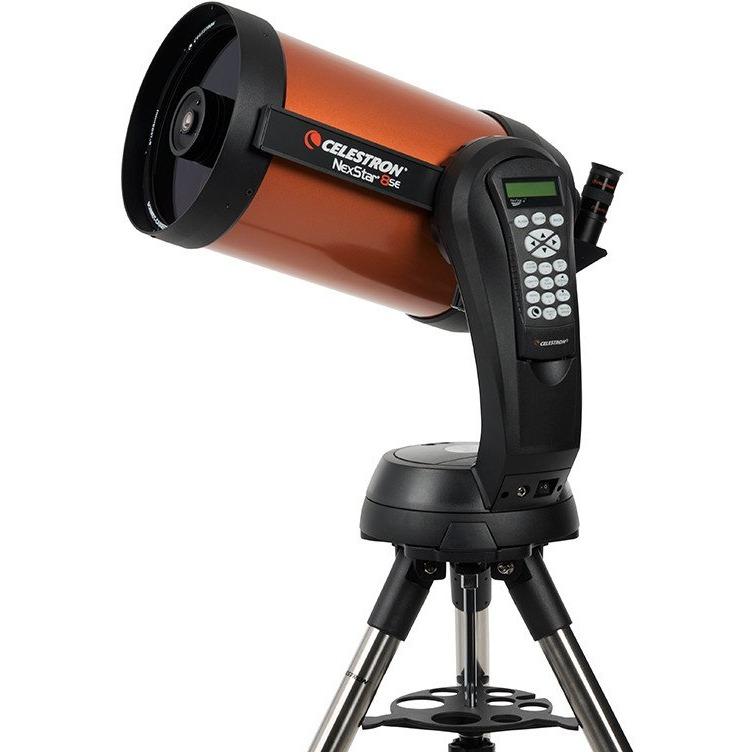
GPS for Your Telescope?
Many years ago, back before I had a cell phone with a GPS chip, I bought a dedicated GPS unit for my telescope. Even though I can use my cell phone to enter the time, latitude and longitude into the hand controller of my scope, I continue to use the Celestron GPS unit only with this particular mount and only when I am visually observing.
When I am taking pictures the mount is connected to a computer and it is easier to just enter the coordinates into the computer. I have two other telescope mounts that I only use for taking pictures. I don’t use a GPS unit with them either.
So the bottom line is you don’t need one. For somethings it is a “nice to have” item. For what it costs there is probably some other piece of equipment that would provide more value for the money, such as an eyepiece, a filter or a Bahtinov Focusing Mask, such as the one I bought for my Celestron 8″ telescope.
In this post I’ll discuss how this doohickey works.
First Things First and a Disclaimer
I often include links to products for which I get a small commission if someone buys them.
I’m not going to do this in this post (except for the GPS unit), which is why I have waited so long to publish this part of the series. You see, as a result of the pandemic, there has been a shortage of telescopes and accessories. This has been due to so many people buying astronomy products and, at the same time, production in China (especially) and other countries at reduced capacity.
Most of the major telescope companies have been out of products for months and won’t have a breadth of inventory until next year.
Back in October I wanted to purchase a Celestron CGX computerized equatorial telescope mount. Scouring the Internet for over a week, I found what was apparently the only unit available in the entire United States. Fortunately the retailer didn’t take advantage of the shortage, and I bought it at regular list price. The company could have tacked on $500 and someone would have bought it. It will be another 2-3 months before Celestron can deliver this model mount to their dealers.
The same thing occurred when I searched for a William Optics ZenithStar 61mm refractor telescope. Only one company had it is stock. Today, every retailer I checked showed it on back order.
My search and purchases (above). The little gold scope at the top is a William Optics 32mm UniGuide Scope. The red piece on the end of the guide scope is a ZWO ASI120 Mini Monochrome CMOS Camera that is connected to a computer. Software in the computer called PHD2 precisely guides the mount. Even though the mount is computerized and tracks objects, this combination takes over the guiding duties and is much more accurate allowing super long exposures.
The white and gold telescope is a William Optics ZenithStar 61II Doublet Refracting Telescope. Attached to the back is a Sony A6000 Mirrorless APS-C digital camera, which I already owned. Mounted between the telescope and the camera is a William Optics Z61 adjustable field flattener.
All of this is mounted on the Celestron CGX computerized equatorial mount.
Today Amazon is out of most popular and quality telescopes and accessories. However some items, such as the extremely popular Celestron NexStar 4se and Celestron NexStar 8se are “available” from Amazon 3rd party sellers. All of these 3rd party sellers I checked today are not well know retailers and their prices are well above the manufacturer’s list price.
Examples
The NexStar 4se lists for $499. Third party sellers on Amazon are listing these from $779 up to $998!
The NexStar 8se lists for $1,199. Third party sellers are retailing these from $1,899 to $2,399!
To make matters worse, not a single one of these sellers actually have a unit in stock.
As much as I would like to steer people to Amazon, which normally has competitive prices and earns me a small commission, I cannot in good conscious do this for telescopes at this point in time. We cannot blame Amazon because they don’t (and shouldn’t) dictate what a 3rd party seller can charge.
So instead, if you are in the market for a telescope or accessories, I highly recommend the following companies. I won’t earn anything if you buy from them. However, I have done business with all of them. All provide excellent service and competitive pricing. At the same time, all of them have limited inventory of telescopes and accessories.
Of course, check to see if Amazon has a particular product you need. They still have quite a selection and I have purchased several astronomy related products over the past few months.
- Adorama
- Agena AstroProducts
- B&H Photo Video
- High Point Scientific
- Mile High Astronomy
- William Optics
- Woodland Hills Camera & Telescope
“GoTo” Computerized Telescope Mounts
In this telescope series I have recommended “GoTo” telescopes. However, I haven’t gone into much detail about how these things actually work. Before discussing GPS for telescopes, the first order of business is to take a deeper dive into GoTo telescope mounts.
A fine point to clarify is the telescope mount is the computerized component.
In the picture below there are three components:
- At the very top is the Optical Tube Assembly or OTA. It is what most people think of when telescope is mentioned.
- The middle section is the telescope mount. In this case, the mount has two motors that turn so the OTA can stay fixed on an object as the earth turns. This mount has circuit boards (computer) to control the mount.
- The mount is attached to a tripod to keep everything steady and secure.
Manual Telescope Mounts
A manual telescope mount can move, but requires the user to turn knobs by hand to keep an object in view. Inexpensive mounts do not have motors or computer controls. Today most manual mounts are inexpensive entry-level models.
Two Types of Mounts (Alt-Az and Equatorial)
In Part 1 of this series took a quick look at both kinds of mounts. I’ll just copy and paste that passage because I’m lazy tonight.
Alt-Az mounts are the simplest and lightest. Two motors move the scope from side-to-side and up and down. They are excellent for planetary viewing and for short photography of planetary objects, usually at or under 30 seconds.
Equatorial mounts are aligned to the celestial North Pole and are required for long exposures or for tracking deep sky objects. They are heavier and more expensive than Alt-Az mounts.
If you want to do astrophotography of deep sky objects you will need an equatorial mount. The picture below of the Andromeda Galaxy was taken with my Sony A6000 camera mounted on the ZenithStar 61mm telescope and the Celestron CGX computerized equatorial mount.
I took sixty 30-second exposures at 400 ISO, and then stacked the best 55 images in a program named Astro Pixel Processor. Post processing of the stacked images was done with two programs; StarTools and then Affinity Photo for the final the final version below.
The picture of this mount and telescope is again inserted into this post below. Note that the ZenithStar 61 is about the same size as a camera telephoto lens. One could just use a quality telephoto lens to photograph Andromeda. The critical success factor is a quality equatorial mount.
How a GoTo Telescope Mount Works
Most modern GoTo Mounts come with a hand controller like the Celestron NexStar 8se with an Alt-Az mount (below). The hand controller is used to input data and to control the scope. Optionally some scopes can accept data from a computer or an iPad.
With both kinds of mounts the user has to input the time zone, time, date, latitude and longitude.
Alt-Az Mount
There are several ways to align a basic GoTo mount to the sky. I find the two-star alignment method works best for me. Using the hand controller prompts, the scope is slewed until an identified star is found in the eyepiece. This star in selected from the mount’s database and entered. Then the scope is moved to a second star far away from the first and entered into the mount. From this point, the user can pick an object from the hand controller (a planet, the moon, star, or deep sky object) and the mount will move the telescope to the object and then track it as the earth rotates.
The mount tracks the star by making incremental adjustments to the mount’s altitude and azimuth position (up and down, left or right). Because the mount isn’t aligned to the North Star (Polaris) the altitude and azimuth corrections cause movements that make long exposure photography impossible.
Equatorial Mounts
The process is almost the same as the Alt-Az alignment, except the mount must first be aligned with Polaris. This alignment, called a polar alignment, allows the telescope to be aligned with the tilt of the earth. This way, the altitude and azimuth motors can run at a constant smooth speed, which makes long exposure possible.
Disadvantages and Advantages of GoTo Mounts
The only disadvantage is the user must be able to identify the alignment stars in the night sky.
This disadvantage is also an advantage. That is, the user must become knowledgeable about the night sky just to set it up and track an object. Isn’t this why one would buy a telescope?
What is Possible
In a future post, I will detail how I set up my CGX mount using several accessories along with the SkySync GPS. For now, here is a quick summary.
After I first polar aligned the mount, I marked spots in the ground so the three legs of the tripod. Now every time I set it up, the tripod goes in the same exact position. Also there is a level on the mount so I know when it is level. By placing the tripod and mount in the same position each time, the mount is always polar aligned. Using some additional accessories, I simple tell the mount to align itself. While I sit and watch, the mount moves to four saved positions, takes a picture from each position and matches the stars to its database. When it is done aligning I can command it to go to any object in its 45,000-object database. But then, I don’t have a powerful enough OTA on the mount to see all of them.
Celestron SkySync GPS Unit
Back when I bought this, my cell phone couldn’t tell me the latitude and longitude. So I would have to look it up unless I was at home (the GoTo mount stores the home location). But even at home without the SkySync I would have to enter the time and date.
The SkySync, which only works on compatible Celestron mounts, automatically enters all the data without any commands from me.
I’ll get into more detail about the computerized features in a future post. For a teaser I can completely operate the scope for astrophotography from inside the house on cold nights. I set up all the equipment in the afternoon. From in the house I can turn it on, tell it to do an alignment, go to an object, focus the object, and then start taking pictures. I never do this because I also enjoy the visual aspect — looking at objects through an eyepiece. But if I am taking several hours of pictures I just let the scope do everything automatically. About once an hour I go out and check on things, make any needed adjustments and then go back inside.
Back to Part 6
This website may be compensated for linking to other sites for sales of products. As an Amazon Associate I earn a small fee from qualifying purchases at no additional cost to the purchaser.






